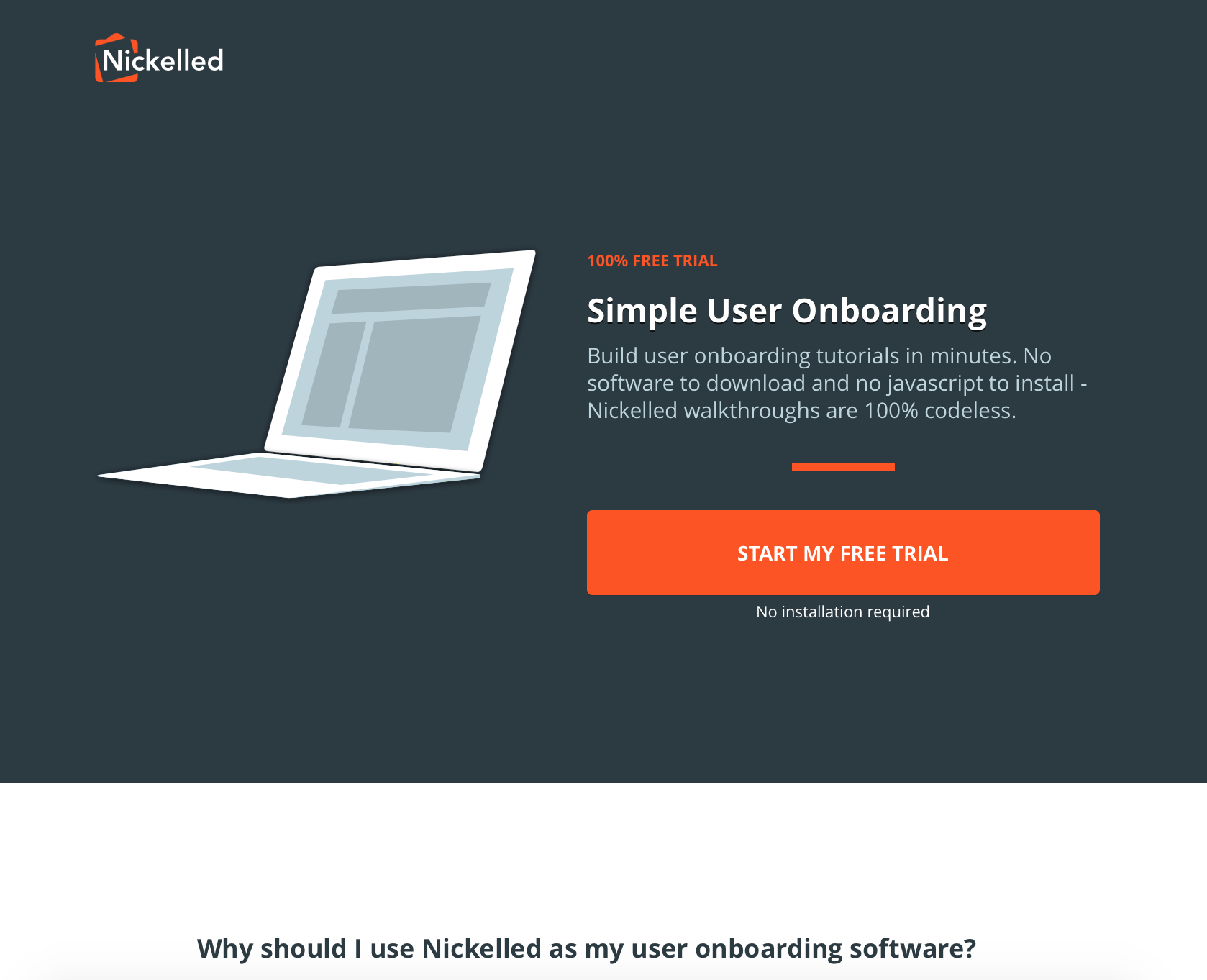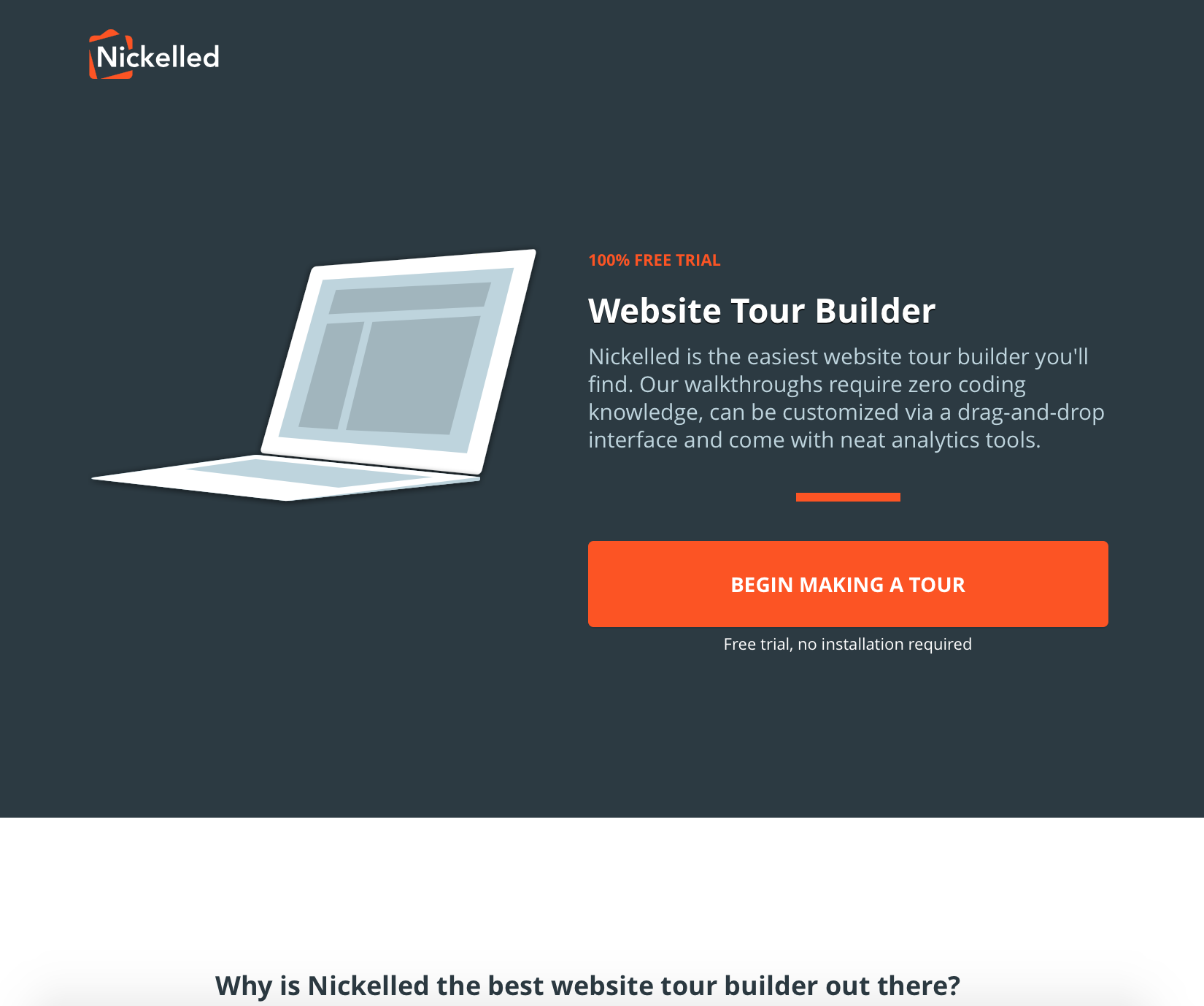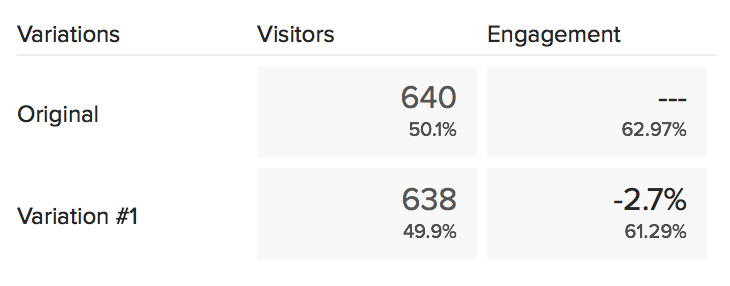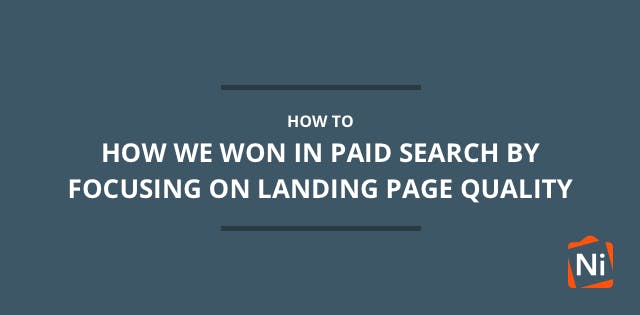This week I was talking to another business about the difficulties that they were having with Google AdWords.
They had spent over $3000 in one two-month campaign and had received extraordinarily poor results.
Their experiences got me thinking about our own efforts on paid search which have been pretty successful in a surprisingly short space of time, although we're still learning.
I've often heard marketers from SaaS businesses complain that AdWords is no longer a viable channel for generating leads for signups. Actually, I can understand this point of view – without intensive experimentation, it is easy to put money into Google AdWords and get very little back.
This was effectively the scenario that we were in when we started our paid search journey four months ago.
We were investing between $50 and $100 every day and although our number of visitors was reasonable, we saw very few trial signup conversions and even fewer customers.
The process that we undertook to try to improve his results has been incredibly valuable across the business – the benefits that we have seen have extended past paid search and have helped us in other areas, including organic page rankings and e-book conversions, which come through social media, referrals, and other channels.
Part of the reason our results have been so far-reaching is because a huge part of our focus has been on improving the landing page experience for people who click on our paid search ads.
With that in mind, I wanted to share a few of the things that we have done to boost our landing page quality, and consequently, our overall quality score.
Before we get started though, a quick primer – what is quality score?
(Skip this if you already know).
Quality score is a rank which is assigned by Google to each of the keywords in your AdWords account.
It’s important because Google uses an algorithm which combines quality score and the CPC you are willing to pay to form your overall “ad rank” – effectively, where your ad appears on the page (or whether it appears at all).
Because ad rank is essentially a multiplier of quality score and cost per click, improving a keyword’s quality score can have a dramatic effect on the cost of each click, the position on the page or both.
Quality score is calculated at a keyword level and is therefore independent of the campaigns and the ad groups in your AdWord account. If you mouse over the little bubble next to each keyword in the AdWords interface, you’ll get an idea of the three elements that make up quality score, and how your given keyword fares for each one:

As you can see, quality score is made up of:
- Expected clickthrough rate
- Ad relevance
- Landing page experience
For a full explanation of each of these elements, I recommend heading over to read the in-depth Google articles here – suffice to say that your quality score is a 1-10 ranking calculated using a combination of the above three factors.
Here's Google's Hal Varian, who explains in a bit more detail:
In this article, we’re focusing mainly on the final factor, which has made a huge difference for us.
However, you should always ensure that your AdWords ads include the keyword in question (a key factor in ad relevance), are well written, and include as many ad extensions as possible (key factors in expected clickthrough rate).
Three landing page quality changes that had a huge effect on our paid search efforts
Stop sending traffic to non-optimized pages
If you’re sending PPC traffic to your website homepage, you should stop now. It’s a bad idea for all sorts of reasons. A couple, however, stand out:
- It’s nearly impossible to optimize your homepage for the range of messages and intents that you’ll be using with any advanced AdWords campaign.
- It’s pretty hard to optimize a homepage for the lower funnel, which is where most PPC visitors are.
- Your homepage almost certainly contains a ton of distractions which will pull users away from your – and their – conversion goals.
When we started PPC, we sent users to the homepage. That meant that whenever you clicked on an ad, no matter what the keyword was, you landed on our homepage.
No wonder our conversion rate was so low. As a PPC landing page, our homepage was a nightmare for visitors — the messages were confusing, the calls to action weren’t clear or consistent and much of the page was dedicated to talking about things that a PPC visitor already knew or wouldn’t care about.
Our first task, therefore, was the creation of dedicated PPC landing pages. Here’s the format we ended up using:

How much clearer is that? One simple, clear CTA above the fold, a nice headline (more on that later) and images that are directly related to the page topic. When you’re on this page, it’s obvious what to do next – in fact, there’s not much choice. By removing almost all of the links, we make it clear to users that the next step is signing up for a trial.
Takeaway: The chances of a user taking the action you’re looking for is much, much higher if you send them to a page which is designed around that action. Odds are, your homepage isn’t – so nine times out of ten, you shouldn’t send your paid traffic there.
Focus on keyword optimization
Although paid search is common seen as a shortcut for SEO, the two are more closely related than they seem.
Google, in both search engine ranking and in ad ranking, is dedicated to providing the best possible experience for its users. That means making things harder for pages that it perceives as being less relevant to a query — and this concept applies as much to paid search as it does in organic search.
Our first paid search attempts had keywords with different messaging bundled into one ad group and one landing page, and from reviewing hundreds of AdWords accounts over the years, I can tell you that’s fairly common.
To give you a clearer example, take the queries “website walkthrough” and “website tour builder”, both of which we wanted as AdWords keywords. Remember that quality score is calculated at a keyword level, and originally, our ads pointed to our homepage. How many times was the phrase “website tour builder” featured on the homepage? That’s right, zero.
Our landing page for this keyword now looks like this:

There are a couple of things happening here worth pointing out.
First off, the keyword is in the page title, page description, URL and H1, which sends four pretty strong signals to the Quality Score algorithm that it’s in the right place.
Secondly, that landing page copy exactly matches what a user sees in the ad:

As a user, I don’t want any cognitive dissonance when I land on a landing page. So it’s nice when the heading and subheading exactly match what’s in the ad — I know I’ve landed on exactly where I wanted to be.
Third, (if you didn't get it by now) this page is a template. When we started making these changes, we quickly realized that this was going to take time, and we wanted to speed the process up. So we created a templatized version of the page which would be easy to tweak as we identified more high-performing keywords. Now, we have a significant number across all of our top queries, and when we add new keywords we suspect will have a reasonable amount of traffic, we’ll add a specific landing page for it.
Users appreciate landing pages which are semantically similar to the ad that they just clicked, and Google seems to recognize that within AdWords.
Improving the browsing experience
As early as 2010, Google made clear that it was using the speed of a site as a signal in organic rankings.
In recent years, it’s been even more explicit about its focus on user experience as a quality signal, revealing earlier in 2015 that mobile-optimized pages would rank more highly in mobile queries, for instance.
There’s good reason to believe that these signals, already well-established in the world of SEO, have an effect on paid search as well – and our experience seems to suggest that this is the case.
For weeks after we launched our keyword-optimized pages, we checked AdWords daily, waiting for the expected boost in landing page experience to come through. It did not.
It was only by chance that I put our site into Google’s PageSpeed tools during the summer and got my first taste of how poorly Google felt our site performed. Although our site was responsive and we adhered to the basic best practice such as minified CSS and javascript, we failed on about five more serious fronts.
Scanning through the list, we knew that we’d need to put serious work into improving our scores. Of particular concern were:
- Our images were bloated
- Our server was serving uncompressed assets
- We had a ton of render-blocking Javascript which slowed pageloads
For five solid days, Nickelled’s head of product Fraser Deans and I worked to try to remedy some of these issues.
Using ImageOptim, we compressed all of our images, we implemented asset caching and fingerprinting and we set up new page templates so that we could serve key pages with considerably less render-blocking Javascript than much of the site required.
The results were easy to track, thanks to the PageSpeed tool. We saw our score go from 35, break through 50 and then top 80.
The impact of these changes was almost immediately visible in AdWords — where we had previously scored below average for landing page experience, we started to see scores tick up to average, and sometimes above average.
Takeaway: Google isn’t specific about the weighting it assigns to speed in landing page experience, and I don’t want to mislead here – our sudden rise in score could have been related to other factors, and it’s very difficult to say for sure. All I’ll offer is that if you’ve optimized for page and keyword content and you’re still struggling to achieve a reasonably landing page experience rating, pagespeed could be something to look at.
Other changes that had a smaller effect on our paid search efforts
Forms vs Buttons
For some time, it worried me that our landing page contained a big button which takes people through to a signup page, rather than a form which would give them the ability to convert on the page there and then. Logically, I thought we’d get more conversions by capturing details on the page itself.
Finally, we actually tried testing this, and replaced the button with a really simple form to allow people to make a guide straight away.
We recorded the results in Optimizely, and it turned out that I was wrong.

Far from preferring an on-page form, visitors seemed slightly less likely to interact with it — they much preferred to click on a button and fill out the form. As it happened, we preferred that too, as our on-page form didn’t capture as much detail as our official sign up form, so we changed it back and have been happy with the results.
Inbound links
With a few landing pages, we tested linking to them from both inside and outside the site to see if there was an effect on landing page quality (for organic search, inbound links are a well-known strong signal).
In fact, there didn’t seem to be — pages which were ‘orphaned’ within the site performed just as well as those which were accessible through the navigation.
Making each page more unique
At first, we were worried that much of the content (page elements, images, some text sections) on our various landing pages was the same, and that we may be penalized by AdWords by creating so many obviously ‘engineered’ pages with comparatively minor keyword changes.
In fact, this doesn’t seem to be a problem for AdWords – when we’ve created landing pages with unique content from scratch, we haven’t seen much of an effect on the landing page relevance rating, and in some cases, it’s been worse.
That Google treats AdWords landing pages in isolation is a good thing, and it makes sense for both us and the user, who receives a relevant page no matter which keyword they click on.
The results
In case it’s not immediately clear, discovering all this took a lot of time and effort — so we’re pretty happy that the results have been worthwhile.
Unfortunately, Google doesn’t provide historical quality score, so there’s no pretty line graph of improvement that we can showcase here.
However, we've seen a week-over-week improvement in quality score and a corresponding decrease in CPCs throughout October – AdWords is now a valuable traffic generator for us, despite the fact that we're playing in a very crowded space.
We've also learned a huge amount about what our users value and how they're likely to convert on our site – we're now experimenting with some of the tricks used above (and a bunch of others from other sources such as these) in other landing pages to see if we can replicate the effect.
Finally – and arguably most importantly – the changes we made have resulted in significant improvements for visitors to our site. Thanks to the work we put in, our pages are far snappier and if you land on a Nickelled landing page from a PPC ad, you'll get exactly what you were expecting.
